Chances are that maybe you, or at least someone else you know, is vegetarian. A vegetarian is someone who doesn’t eat meat, fish, or poultry. Vegans, on the other hand, are vegetarians but go a bit beyond that. A vegan not only doesn’t eat the above mentioned meats, but also abstains from all animal products, like milk, cheese, other dairy items, eggs, honey, wool, silk, or leather. Some of the reasons why people become vegetarian are either health related, for ethical reasons, environmental issues, economics, or even a dislike for meat. In this list below, we’ll be talking about a hypothetical situation in which everyone around the globe became a vegetarian.
10. No More Livestock

The current global demand for all kinds of meats is increasing, bolstered by both the planet’s increasing population and the economic development of more impoverished countries. Here, the average meal is predominantly plant-based, but as these countries become more economically stable, so do its citizens have more access to meat as a primary food source. Already developed countries, on the other hand, seem to be slowly heading in the opposite direction, with their meat consumption having the tendency to slide down.
At any given time around the world, there are roughly 1.4 billion cattle, 1.9 billion sheep and goats, 980 million pigs, and 19.6 billion chickens. In 2011, the world slaughtered almost 300 million cows, 947 million sheep and goats, 1.38 billion pigs, 2.8 billion ducks, 1.3 billion turkeys and geese, and a whopping 58 billion chickens. The largest consumer of beef is Uruguay, with an average of 102 pounds per capita in 2015. The European Union consumes the most pork (72.7 pounds per person), with China in second place at 70. Sudan consumes the most sheep meat (23 pounds per person). And when it comes to poultry, Israel leads with 127 pounds, followed by the US with 105. The world average for each of these is: 14 pounds of beef per person per year, 27.5 for pork, 3.7 for sheep, and 30 pounds of poultry.
In overall meat consumption per person, Australia, the United States, and Israel lead in the polls, with roughly 205, 200 and 190 pounds of meat, respectively. At the other end of the spectrum are Bangladesh and India, with roughly 7.2 pounds each. One major reason for why the small amount of meat eaten in this part of the world are Buddhism and Hinduism, which share the belief in rebirth and the importance of nonviolence. These lead people to reject the slaughter and consumption of animals. Not surprisingly, India leads in the number vegetarian people, with 31% of the population (375 million people) labeling themselves as such. Hypothetically speaking, if everyone were to become vegetarian, many of these animals would, logically, disappear.
9. Replenishing the Ocean Fisheries

Up until the turn of the 20th century, the world’s fisheries remained more or less unaffected by human consumption. Even though people had been fishing the seas and oceans for a very long time, only with the advent of modern technology did humanity manage to make a serious and unprecedented dent in the fish population. Back in 1950 the estimate of the total ocean fish catch was somewhere around 20 to 30 million metric tons. By 1990, that number had reached 90 million tons. Neither of these numbers, however, reflect the amount of bycatch discarded back into the oceans every year; roughly 27 million tons per year since 1994. These are the marine species which were not targeted for capture, like dolphins, sea turtles, sharks, and so on. An estimate of over 300,000 small whales, dolphins, and porpoises die each year by entangling themselves in fishing nets.
In 2014 the total capture amassed to about 93.4 million tons, showing a sort of leveling off from the previous decade. However, this reflects the complete fishery collapse in many parts of the world and the impossibility for increased production; not that we reached any kind of equilibrium with nature. In total, we currently consume more than 160 million tons of fish per year, with the difference being supplemented by aquaculture (fish farming). Regardless of these fish farms, which have their own negative environmental effects, it is estimated that by 2048 the oceans will be completely devoid of commercially viable fish. Again, if people decided to no longer consume fish and turn to a vegetarian diet, the strain on the world’s fisheries would subside and in time they would be able to recover, in many cases completely.
8. Freeing Up the Land
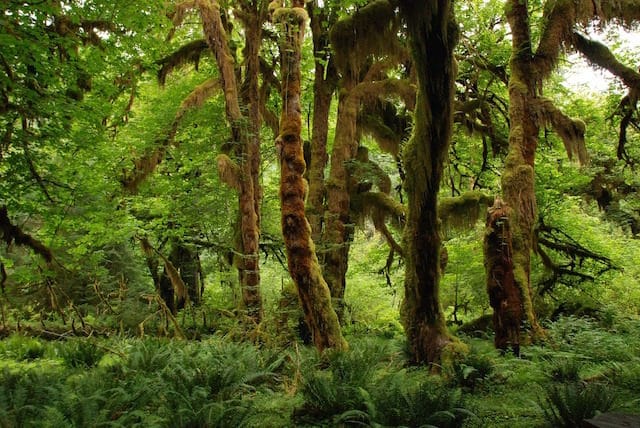
As most of us know, roughly 70% of the planet’s surface is covered by water. So, out the total 197 million square miles of the Earth, only about 58 million (15 billion hectares) make up the dry land we currently inhabit. And out of that, 26% of ice-free terrestrial surface is made up of pastures and grasslands used for grazing livestock; some 3.4 billion hectares in total (more than the whole of Africa, in fact). Large parts of these pastures, however, are in regions too dry or too cold for crop use and are sparsely inhabited.
And while these pasturelands aren’t expanding overall, some 0.4% of rainforests in South America are being cleared annually to make room for the ever increasing demand for beef. The reason grasslands aren’t expanding across the globe is because forested areas in developed countries are growing over marginal pastures. However, the value of these ecosystems, and their reverse climate change potential are far inferior to those in tropical areas. Furthermore, an estimate of somewhere between 20 to 70 percent of all this grassland is considered to be degraded due to the extensive usage and lack of nutrients.
In addition to over a quarter of the Earth’s total landmass being used for grazing, livestock also require an additional 471 million hectares – a third of all arable land – for growing feed. Most of this land is located within the member states of the OECD (Organization for Economic Co-operation and Development). For example, 80% of all corn and 95% of oat production in the US is feed. Moreover, developing countries around the world, predominantly in South America, are rapidly expanding into their feed-crop production. And like with the pasturelands mentioned above, much of this expansion is made at the expense of the Amazonian rainforest. If all people became vegetarian, it wouldn’t mean that all of this land would return to its natural state, since we would have to supplement our meat-based diet with a plant-based one. But we have to take into account the fact that at the present-day we are supplying our livestock with 77 million tons of human edible protein, and we are getting just 58 million tons in return. However, animal proteins have a higher nutritive value to humans than the feed used for livestock.
7. Returning Biodiversity
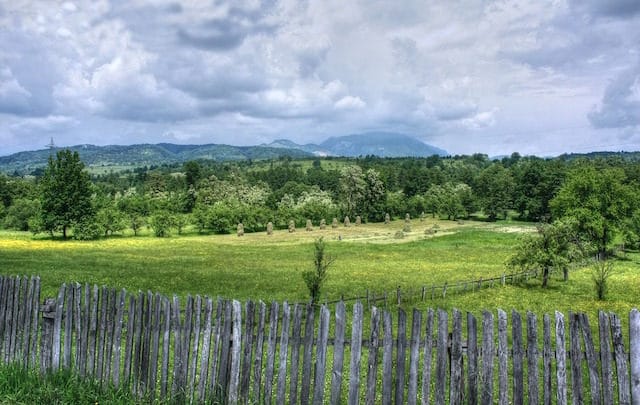
Surprisingly enough, livestock is a key factor in the loss of other animal species. To date, “barnyard animals” make up 20% of all terrestrial animals and now occupy vast areas once habitat to wildlife. It’s fairly difficult to quantify all the effects livestock have on biodiversity. Not all effects are bad, either, since grazing livestock help to maintain naturally occurring grasslands to their original state, thus keeping the habitat more or less intact.
But the overwhelming numbers of cattle and sheep can pose some serious health concerns to the already existing wildlife. In many cases, like the Great Plains, cattle have taken over the habitat formerly belonging to bison and pronghorn antelope. Ranchers worldwide have also drastically reduced the number of predators, often times leading them to their total disappearance from the area. Up until 1960 in Norway, the policy was to exterminate all big predators, which they did. Today the country is again home to 68 wolves, but the Norwegian government decided to cull 47 of them.
Moreover, pasture expansion into forest areas, together with grassland degradation, poses a serious threat to biodiversity. As the meat sector becomes more and more industrialized, it separates the animals from the actual land for large parts of the day, thus destabilizing the nitrogen and phosphorus cycle. On the one hand, grasslands become depleted of nutrients, while on the other, the nutrient-rich waste is often dumped into waterways instead of back on the land. This pollution severely affects marine ecosystems, often times leading to entire dead zones at river mouths.
6. Decreasing Air Pollution
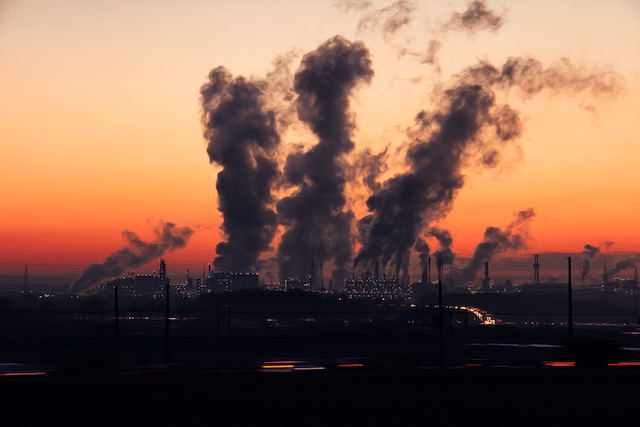
When we talk about air pollution and greenhouse gases, we usually refer to CO2 emissions. This isn’t without cause, however, since the most predominant of these gases is in fact CO2. But unbeknownst to many is the fact that methane gas is up to 30 times more potent at trapping heat in the atmosphere than carbon dioxide. And livestock around the world are responsible for 37% of all methane in the air. Moreover, livestock accounts for 9% of all CO2 and 65% of all nitrous oxide, thus making up 18% of the entire global warming effect; more so than the entire transportation sector worldwide. Much of the methane and part of the CO2 is emitted from rumen fermentation and animal waste. The rest of the CO2 comes from deforestation, in order to make room for pastures and feed-crop land. Together with the fossil fuel consumption surrounding the whole livestock industry (fertilizer production, tractors, processing, storage, etc.) it makes up for the rest of the CO2 emissions.
Nitrous oxide, or laughing gas, is naturally occurring from leguminous feed crops, as well as the many chemical fertilizers applied on other feed-crops. It is also a potent greenhouse gas. Another link between livestock and air pollution is ammonia. Though not linked to climate change per se, ammonia is directly responsible for acid rain, and places with high concentrations of animals are suffering from this frequent occurrence. Domestic animal waste emits 68% of all ammonia into the atmosphere, making up 30 million tons per year. The best and most efficient way for any average person to curve climate change, regardless of any government policies, is in fact to stop eating meat, especially red meat, as much as possible.
5. Conserving Water
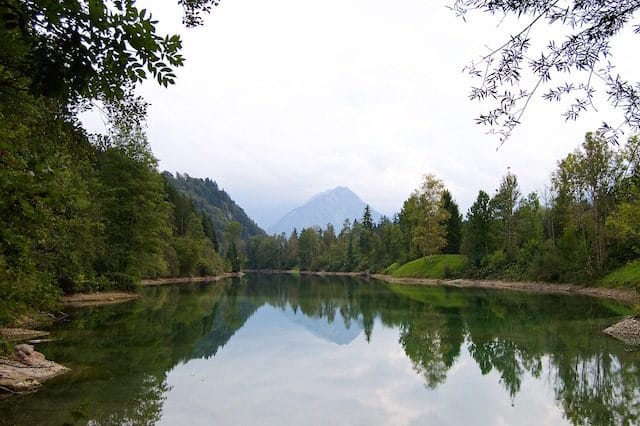
One of the biggest challenges we are about to face as a planet is fresh water scarcity. The effects have already begun to show themselves, predominantly on the West coast of the US, among other places. California relies heavily on snowmelt for its yearly water supply, but because of the record high temperatures in recent years and lack of winter storms, the snowpack is at an all-time low. Some scientists have even found past examples of this occurrence and believe this dry spell could last for centuries. In order to make up for the water shortage, people have begun to tap into the aquifers below ground. The problem is that much of this ground water in non-renewable, and if the drought continues for much longer, this backup, too, will be depleted.
In any case, California, like much of the rest of the world, uses about 70% of its fresh water supply in agriculture, 20% in industry, and the remaining 10% for domestic and everyday use. However, out of all the water usage around the world, livestock directly accounts for 8%. The irrigation of feed-crops and pastures represents 7% here, while the remaining 1% makes up for product processing and drinking water. These numbers, of course, are taken on a global scale, becoming more predominant in drier areas. In Botswana, for example, livestock drinking water accounts for 23% of all water use in the country. Another 15% of all water loss worldwide is attributed evapotranspiration of feed-crops. Other, hard to quantify factors, like poor waste management and intensive land trampling and soil degradation, lead to severe water pollution and a disruption in the natural water cycle.
To put it in more relatable terms, each pound of beef requires 1,800 gallons of water to be produced, one pound of pork needs 720 gallons, and 480 gallons of water are needed for a pound of chicken. Compare this with 191 gallons for a pound of cereal, 107 gallons of water for fruit, and 36 gallons for vegetables. Of course, a pound of any meat packs in more calories than their weight equivalent in plant-based alternatives. However, by comparing the ratio of water per calorie, beef is still 5 times more water intensive than fruit, 7 times more than veggies, and 20 times more so than cereal.
4. Lowering Our Food Security

Hypothetically, renouncing all meat throughout the world does have a few drawbacks. Being an omnivorous species, humans are able to be much more versatile when it comes to environment. Eating meat and animal-based products has allowed humans to travel all across the globe and inhabit most of it. Without eating meat, humans would have never been able to reach and survive the arctic regions of the world, and would have probably never crossed into the Americas via the Bering land bridge so long ago.
Even today, in our technologically advanced society, many people rely solely on animals for their very survival. Livestock can also offer a buffer in national and international food supplies, which can be drawn upon in case of food shortages. The lack of rainfall, hailstorms, prolonged winters, or other unforeseen natural catastrophes can cause many plant-based crops to produce lower yields, or even to fail completely. If we are to ever become completely vegetarian, people living in colder or drier regions would need either to abandon their homes for literal “greener pastures”, to import all of their greens from somewhere else, especially during the winter months, or to make use of large scale modern technology such as indoor vertical farming.
3. Lowering the Risk of an Apocalyptic Disease

One of the biggest threats to humanity has always been disease. One such devastating plague took place when Columbus stumbled upon the New World at the end of the 15th century. In an event which can only be described as being “of Biblical proportions”, over 90% of all Native Americans died of smallpox, measles, influenza and other Old World diseases. As part of the Columbian Exchange, some diseases native to the Americas transferred to the Europeans as well: polio, syphilis, and hepatitis. But because the Americans lived in isolation from the rest of the world, and never had any contact with domesticated animals such as cows, pigs, sheep, or chickens, when they came in contact with the Europeans, they began dying by the millions. These diseases originated from these animals and were passed down to humans long before this encounter. Thus, Europeans already developed some immunity, whereas the Natives didn’t.
Another similar, yet more recent event took place in the first quarter of the 20th century, during WWI. Due to the chaos of the war, the ground zero from where this terrible plight started off is still a matter of debate among scholars today. But, nevertheless, the influenza outbreak – also known as the Spanish Flu – was responsible for five times the number of deaths resulting from the war itself (over 50 million people). It was so contagious and happened so fast that in less than a year more than 500 million people (a quarter of the world’s population) was infected all across the planet. Only a small isolated island somewhere in the Amazonian basin reported no infected. The reasons here were similar to those above: domesticated animals.
With the discovery of antibiotics some time after, the deadly disease has been more or less kept in check since then. But more recently, however, due to the large quantities of antibiotics animals are given to prevent such an outbreak, as well as our own improper use of them, new strains of influenza have become resistant to the drug. These are the swine and avian flus we hear about in the news from time to time. If for whatever reason a new global pandemic were to arise, it will most likely be from here, particularly because we’re again left defenseless against them. In an attempt to get a possible heads up in the case of one such apocalyptic event (especially now that we’re more connected than ever), scientists have been mapping areas with high concentrations of livestock all across the globe. They hope this will help them better predict from where the next outbreak is most likely to occur. Again, if we were to all become vegetarian, one such risk could be seriously lowered.
2. The Livestock Industry is About More Than Just Meat
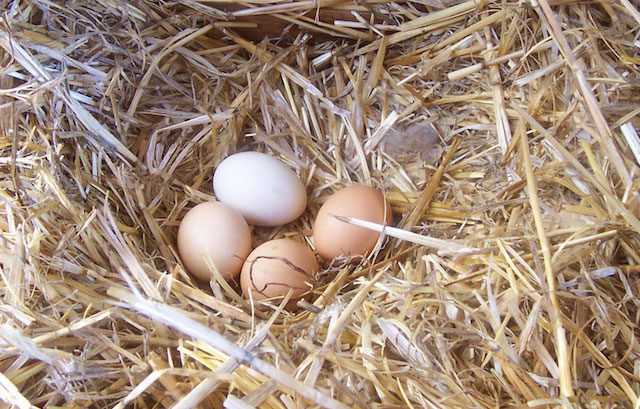
As a whole, the livestock sector makes up about 1.4% of the world’s GDP. It is also growing faster than the rest of the agriculture sector, which itself is declining relative to the overall GDP. In total, the livestock sector makes up 40% of all agriculture, and in more industrialized countries it reaches as high as 50 or even 60%. But relative to its modest contribution to the world’s GDP, livestock provides the livelihood and support to more than 40% of those living below the poverty line. It also accounts for the activity of over 20% of the entire world’s population. If everyone were to become vegetarian, these people would be out of a job. To be fair though, this is hypothetical and can’t happen in real life, or at least not all at once. The most likely scenario would be that people will progressively leave meat out of their diet, giving the economy ample time to adjust to the decreasing demand.
But besides meat, livestock also contributes with dairy products and eggs. But for argument’s sake, let’s consider these as not part of any vegetarian’s diet. However, animal products also come in other forms as well, such as wool, leather, and fats. And while the first two are used in the textile, furniture and other businesses, animal fats and similar byproducts have a wide range of unexpected uses. These include cosmetics, detergents, shampoos and soaps, plastic bags, tires, glues, toothpaste, sugar, condoms, perfumes, explosives, and many, many others.
Now, it wouldn’t make any ethical or economic sense to raise livestock just for the sake of their leather or fats, so plant-based alternatives need to be considered. Rapeseed, soybean, or sunflower could take over due to their high oil content, and hemp could make up for leather and wool to a certain extent. But this would mean that much of the land used for feed, as well as many pasturelands, would need to be covered with these plants instead of returning to their natural state. Algae could also be a perfect substitute for animal fats, since its oil content far surpasses that of the plants mentioned above.
1. Our Nutrition

We have to make one thing clear right from the start here. Animal protein, due to the fact that it’s similar to our own, tends to deliver us all the amino acids we need, whereas plant-based protein lacks one or more of these. One way to combat this is to have a wide range of grains, fruits, and vegetables at our disposal, so as to compensate for each other. In 2003, livestock-based foods contributed an average of 17% of energy and 33% of protein to dietary intakes around the world. These numbers, of course, vary wildly from country to country, as we’ve seen above.
This distribution of meat in our diets has left many people to suffer from different ailments related to their nutrition. According to a recent study, 2.1 billion people – roughly 30% of the world’s population – are either obese or overweight, whereas at the other end of the spectrum, almost 800 million people do not have enough food to lead a healthy life. People who suffer from malnutrition can benefit immensely from livestock-based foods. This is because they often suffer from a lack of protein, vitamin or mineral deficiencies – elements found in meats and dairy. Children in particular have been shown to benefit greatly from a moderate animal-based diet, regardless of if they’re malnourished or not.
Obese and overweight people, on the other hand, have their own series of diseases like diabetes, cardiovascular disease, and certain cancers linked to excess meat and dairy consumption. This group of people would benefit immensely from a lowered intake of red meat and animal fats in particular. In order for people to become vegetarian, everyone should be able to have access to a wide variety of plants, animal fats, and nuts on a daily basis. However, many argue that children need energy-dense and high-protein foods in order to enjoy a healthy and stable development. Perfect examples here are the two Koreas, where people from the impoverished North are on average between 1.2-3.1 inches shorter than those from the South.
1 Comment
i and my family love meat i eat dry food no salt in my dinner and i have the TRUVIA it is made of leaf from merlin and family